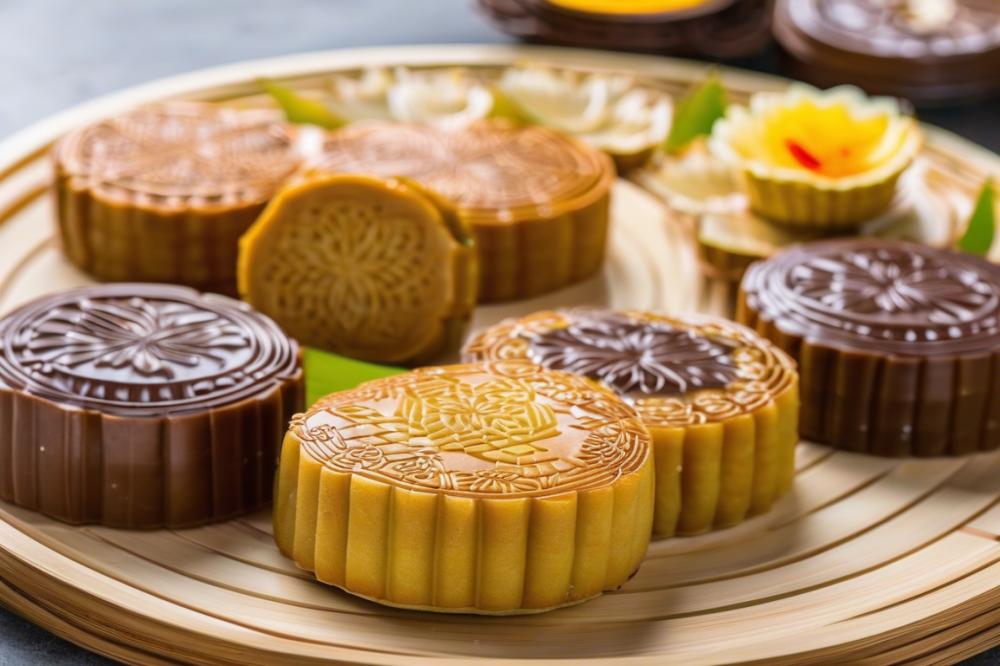Introduction
Bánh Pía is a delightful and traditional dessert from Vietnam, often enjoyed as a special treat during festive occasions. Known widely as a Vietnamese Mooncake, this sweet delicacy has deep roots in Southeast Asian sweets culture. The combination of flavors and textures makes it a favorite among many, especially during celebrations like the Mid-Autumn Festival.
This dessert holds a significant place in Vietnamese food culture. Family gatherings and festive celebrations often feature Bánh Pía, where it symbolizes unity and joy. Preparing these mooncakes is not just about the sweet filling; it represents the love and care that goes into baking for loved ones. Each bite brings back memories of shared moments and cherished traditions.
At the heart of the Bánh Pía recipe is the legendary durian. Known as the “king of fruits,” durian has a unique, strong aroma that fans adore. The rich, creamy texture of durian complements the flaky outer pastry perfectly. This ingredient adds a layer of distinctiveness to the treat, making it stand out among other desserts. Combining durian with sweet mung bean paste creates a harmonious flavor that is both satisfying and intriguing.
As you explore the joy of making this traditional dessert, you will discover not only a recipe but also a story that ties together generations. Bánh Pía goes beyond merely being a sweet treat; it is a representation of culture, heritage, and celebration in Vietnam.
What is Bánh Pía?
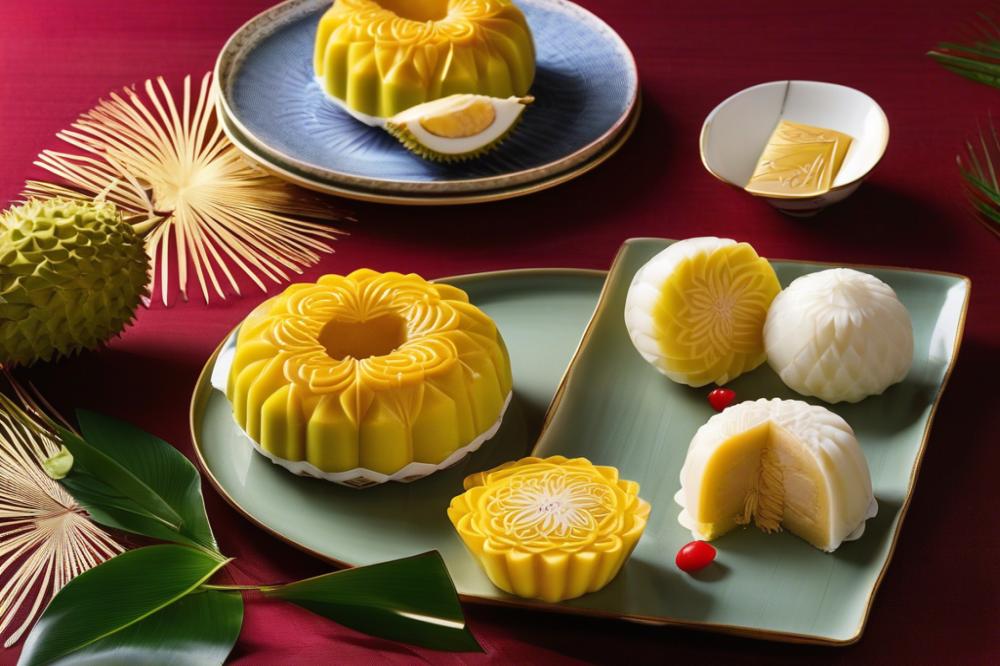
Bánh Pía is a beloved Vietnamese Mooncake that has gained popularity across Southeast Asia. This dessert is known for its flaky, soft crust and rich filling. People often enjoy it during festive occasions, such as the Mid-Autumn Festival, when families gather to celebrate together.
The origins of Bánh Pía can be traced back to the diverse food culture of the region. Its roots lie within a blend of traditional Chinese and local Vietnamese influences. Over time, this sweet treat evolved. It became a symbol of celebration and unity during important festivals.
Variations of Bánh Pía
When it comes to flavors, several variations exist. One of the most popular fillings is made from durian, a fruit known for its strong aroma and creamy texture. Many consider durian a treasured ingredient in Southeast Asian sweets. This unique flavor combination creates a delightful contrast with the cake’s texture. Some recipes also use mung bean, coconut, or even salted egg yolk, catering to different taste preferences.
Festive Role
During the Mid-Autumn Festival, people partake in the tradition of eating mooncakes. Bánh Pía plays a special role in this celebration. Friends and families exchange these treats as gifts, sharing moments of joy and happiness. The act of baking and serving Bánh Pía deepens connections among loved ones. It unites people in a time-honored ritual of appreciation and companionship.
As the festival approaches, local bakeries often prepare large batches of this traditional dessert. The aroma of freshly baked treats fills the air. Many look forward to savoring Bánh Pía as a highlight of the holiday. This mooncake brings a sense of warmth and togetherness that resonates with everyone.
Ingredients and Cooking Instructions
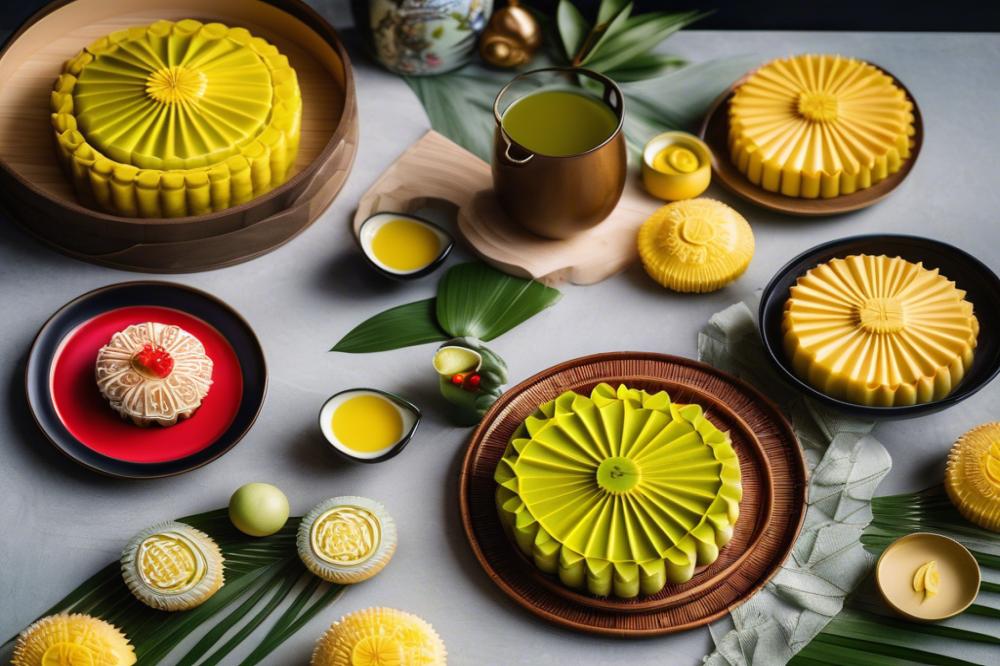
To create a delightful Vietnamese dessert, gather these ingredients:
- 200g all-purpose flour
- 100g sugar
- 80ml water
- 50ml vegetable oil
- 300g ripe durian flesh
- 100g mung beans (cooked)
- Pinch of salt
Here’s the nutritional information for each ingredient:
- All-purpose flour (200g): Approximately 730 calories, rich in carbohydrates.
- Sugar (100g): About 387 calories, provides quick energy.
- Water (80ml): 0 calories, essential for hydration.
- Vegetable oil (50ml): Roughly 450 calories, contains healthy fats.
- Durian flesh (300g): About 500 calories, offers vitamins and minerals.
- Mung beans (100g): Approximately 105 calories, a good source of protein.
- Salt: Minimal calories, enhances flavor.
Step-by-Step Cooking Instructions
Start by preparing the dough. Mix the all-purpose flour, sugar, and a pinch of salt in a large bowl. Gradually add the vegetable oil and water. Knead until it forms a smooth dough. Cover it with a cloth and set it aside for about 30 minutes.
Next, make the durian filling. Take the ripe durian flesh and mash it well. Combine the mashed durian with the cooked mung beans in a bowl. Mix these ingredients thoroughly, and set aside the filling.
Assemble the mooncakes by dividing the dough into small balls. Each ball should be about the size of a golf ball. Flatten one ball in your palm, and place a spoonful of the durian filling in the center. Carefully wrap the dough around the filling, sealing it properly. Gently shape it into a round mooncake.
For the baking process, preheat your oven to 180°C (350°F). Arrange the shaped mooncakes on a baking tray lined with parchment paper. Bake for approximately 15 to 20 minutes or until they turn golden brown. Enjoy your homemade treats, showcasing the rich food culture of Southeast Asian sweets.
Tips for Perfecting Bánh Pía
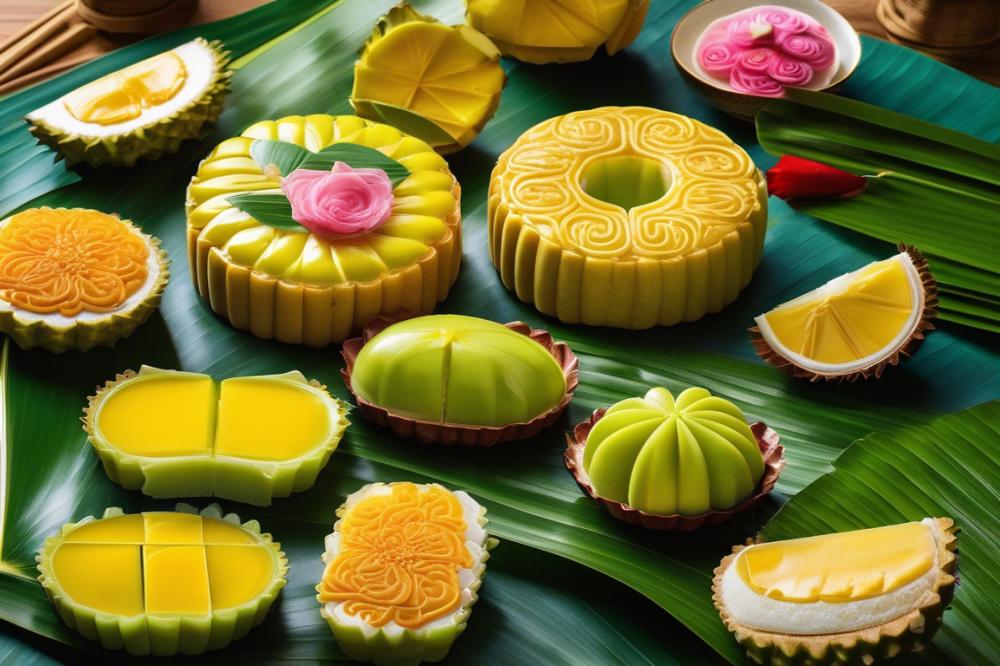
Choosing the Right Durian
Selecting the best durian is essential for flavor. Look for ripe fruit that smells strong and sweet. When buying, the consistency should feel slightly soft but not mushy. Some prefer the flesh to be a bright yellow, indicating ripeness. Consider the variety; some are sweeter while others may have a more bitter profile. Testing for quality can help create a delightful dessert.
Achieving Ideal Dough Texture
For a mouthwatering mooncake, the right dough texture is crucial. Start with the best ingredients, using high-quality flour and fats. Resting the dough before shaping it makes a big difference. Try rolling it out gently, ensuring thin layers for a flaky exterior. Be careful not to overwork the dough, as it can become tough. This attention to detail elevates your baking skills.
Common Mistakes to Avoid
Baking can be tricky, especially with festive treats like these. One common mistake is neglecting to preheat the oven. This step affects the dough’s rise and texture. Another issue is improper filling measurements. Too much or too little can ruin the balance of flavors. Watch for overbaking, as it can lead to dry and crumbly results. Take your time, and analyze each step in the baking process.
Alternatives for Non-Durian Lovers
Some people might not enjoy durian’s strong flavor. If that’s the case, consider using sweet red bean paste or lotus seed paste as alternatives. These fillings provide a delicious twist while still fitting into the food culture of Southeast Asian sweets. Adjusting the recipe is easy, and your treats will still delight many. Creating a version without durian allows you to share this traditional dessert with everyone.
Cultural Significance of Bánh Pía
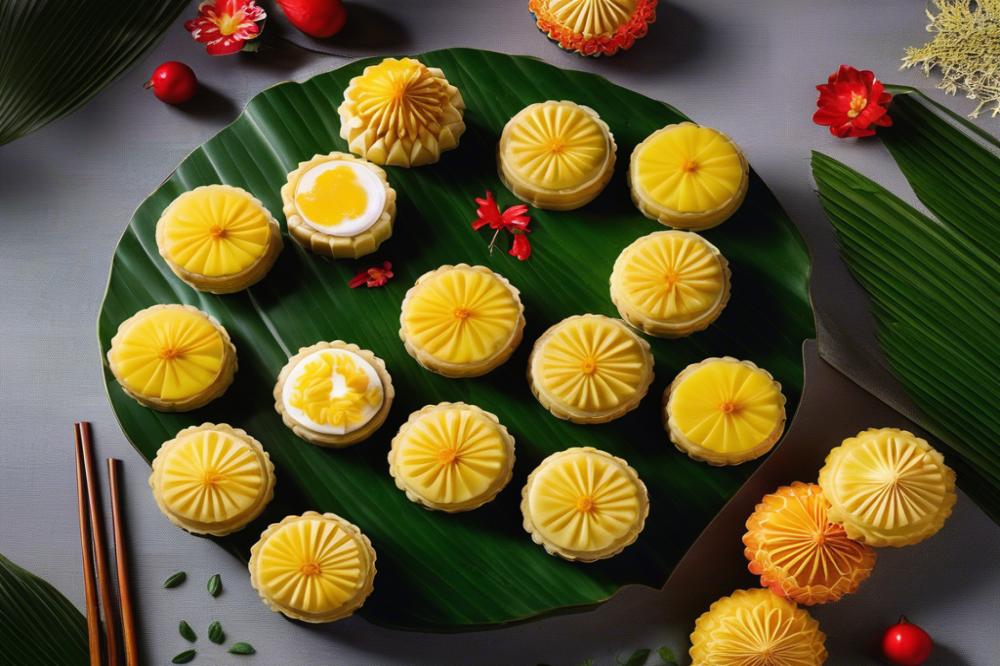
The role of Bánh Pía in Vietnamese traditions is profound. Often associated with the Mid-Autumn Festival, this mooncake serves as a symbol of family reunion. People gather to share these delicious treats during this festive time. Families enjoy baking it together, passing down recipes from generation to generation. Moments spent in the kitchen become special memories for many.
Celebrations come alive with the presence of this dessert. Friends and relatives exchange Bánh Pía as gestures of love and goodwill. Such exchanges strengthen social bonds. High-quality ingredients like durian and mung beans elevate its status among traditional sweets. Every bite celebrates not just the flavors but also the relationships that bind people together.
Social gatherings are rarely complete without this beloved food. At family events, serving Bánh Pía signifies warmth and hospitality. Visitors often feel honored when offered these homemade desserts. In many households, preparing this treat is an integral part of special occasions, fostering unity and togetherness.
Across Southeast Asia, variations of mooncakes exist. In countries like Thailand and Malaysia, different recipes showcase regional flavors. Filipino delicacies also bear similarities, incorporating local ingredients. This shared tradition highlights the interconnectedness of cultural food practices in the region. Each variation tells a story of its own while reflecting a common appreciation for the art of baking.
Final Thoughts on the Timeless Treat
Reflecting on the importance of this delicious dessert, it stands out as a cherished part of Vietnamese culinary traditions. This treat is not just a mooncake; it represents a deep connection to the culture of Vietnam. Each bite reveals layers of history, flavors, and memories, bringing people together during celebrations.
Trying this recipe is a fantastic adventure. Anyone can experience the rich flavors that durian brings to life. Making these treats can be a fun activity to share with family and friends. Imagine serving them during gatherings or special occasions, creating lasting memories with each delicious piece.
As we savor traditional desserts, we can appreciate how they shape cultural identity. These remarkable treats tell stories of heritage and pride. Each recipe passed down holds significance, bridging generations together. Embracing this culinary art ensures that the sense of community and belonging remains vibrant.

